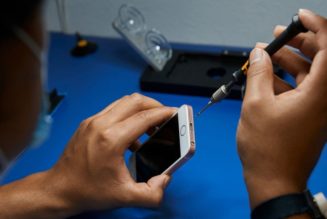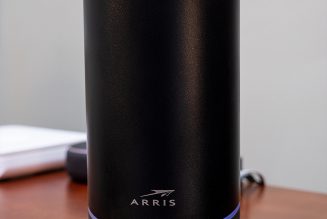Bloomberg reports “technical challenges” put Apple’s iPhone-subverting augmented reality glasses project on the back burner as it shifts focus to making a cheaper mixed reality headset.
:format(webp)/cdn.vox-cdn.com/uploads/chorus_asset/file/23951261/VRG_Illo_N_Barclay_5_apple.jpg)
Another Apple rumor from Bloomberg reporter Mark Gurman focuses on the company’s efforts to create game-changing augmented reality glasses that could make picking up your iPhone obsolete — if they’re ever built.
The race to develop consumer-friendly AR glasses is in full swing, despite notable misfires like Google’s abandoned Glass project and Microsoft’s now enterprise- and military-focused HoloLens.
Meta, Google, and others are working on similar projects with names like Project Iris and Nazare, but now Gurman reports Apple’s plan to release a set of glasses following the launch of its first mixed reality project — a high-end headset set to debut this year — had already slipped from 2023 to 2025 and is now on hold indefinitely.
Apple’s initial sensor and camera-loaded headset could cost around $3,000, combining dedicated VR hardware with a desktop-like M2 CPU, similar to the ones inside the MacBook Pro and Mac Mini computers Apple announced this morning.
Gurman writes that a cheaper version using iPhone-like hardware launching in 2024 or 2025 might be able to have a starting price closer to $1,500, or about where Meta’s Quest Pro is now. This also follows his earlier reporting about the existence of Reality Pro / Reality One trademarks, which could help delineate the different classes of headsets.
That pricing doesn’t suggest widespread adoption and availability of mixed-reality headsets are just around the corner. Still, Apple’s typical high-end hardware strategy aligns better with that than launching something similar to Meta’s cheapest Quest VR headsets.
The other bad sign is that if creating a set of lightweight, all-day wearable AR glasses is currently out of reach for Apple for “technical challenges,” it gets harder to imagine that Google’s Project Iris, or the Meta glasses that Mark Zuckerberg reportedly hoped to launch in 2024, will be ready to wear anytime soon.
However, maybe they’ll find success based on alternative approaches. Google announced it would begin testing prototypes out in the world last fall. At the same time, Meta’s three-step Nazare / Artemis / Hypernova plan starts with a set of glasses that will only be given to developers. The report doesn’t cite Apple’s change in plans as a result of budget cuts, but with layoffs and cutbacks striking big tech companies, navigating the current economic situation may be as much of an issue as figuring out how to make waveguide displays work better or to design a battery that fits on a device made for someone’s face.









